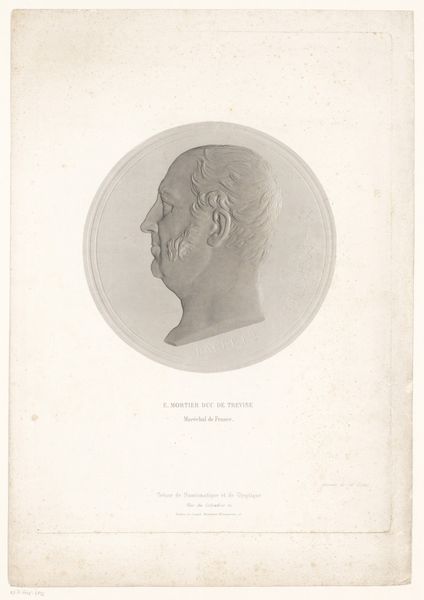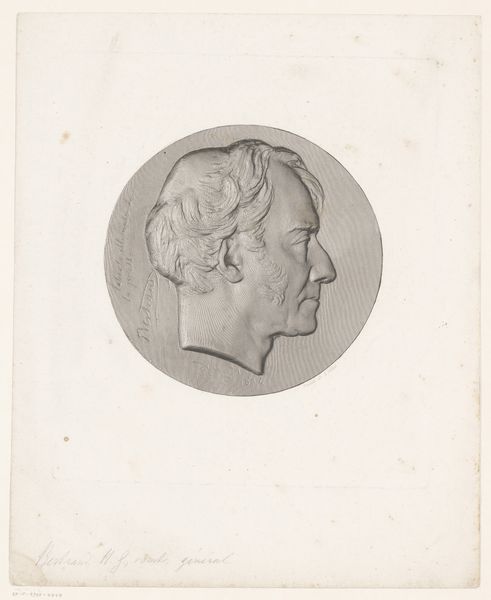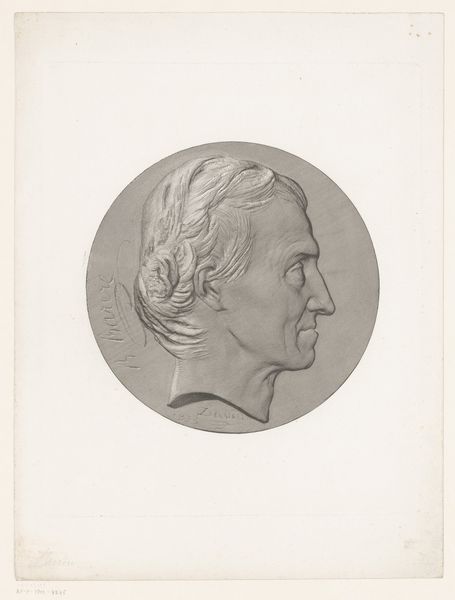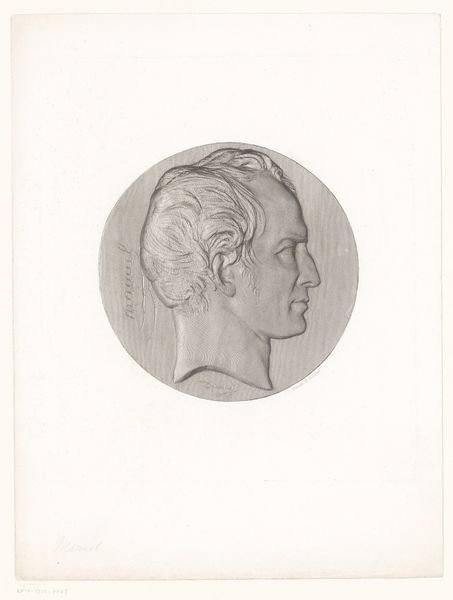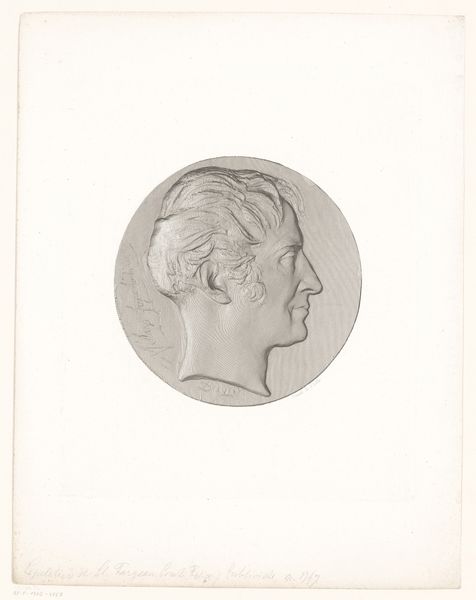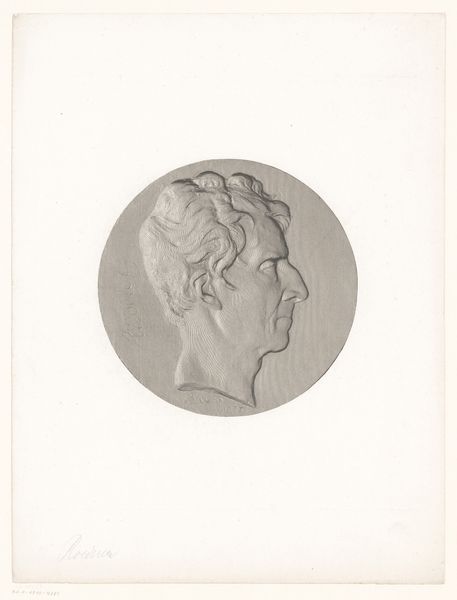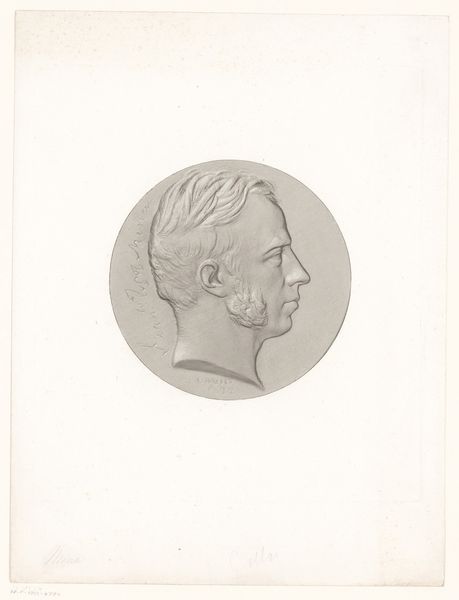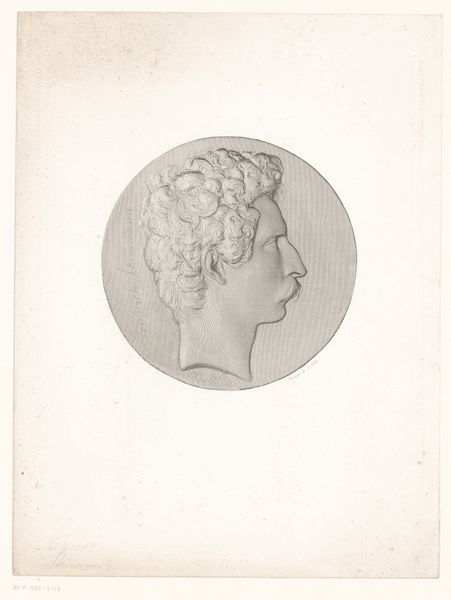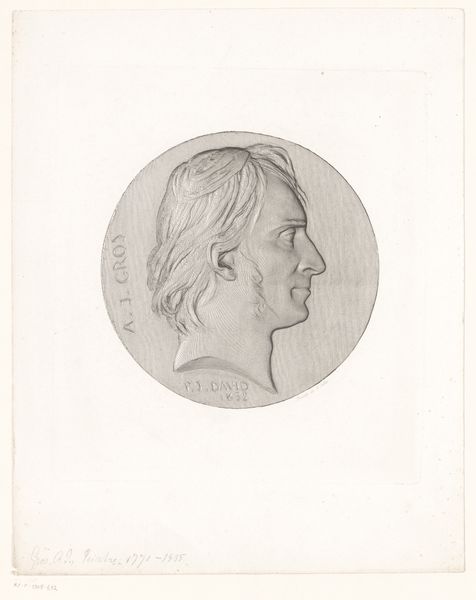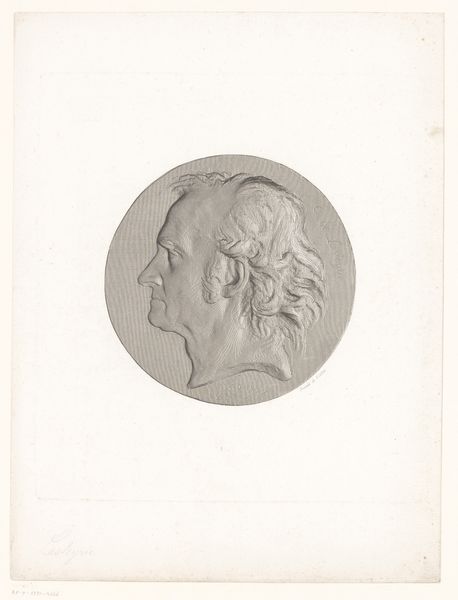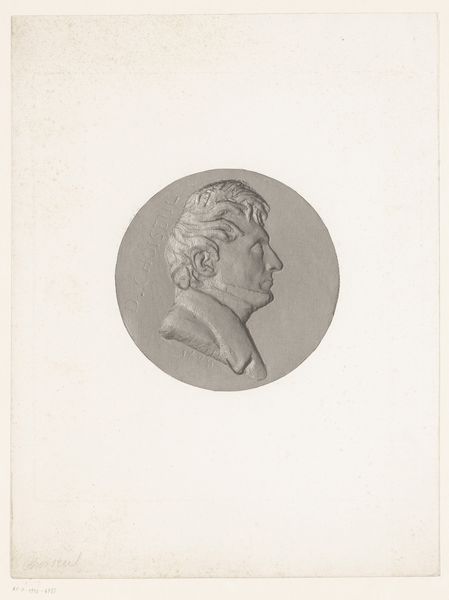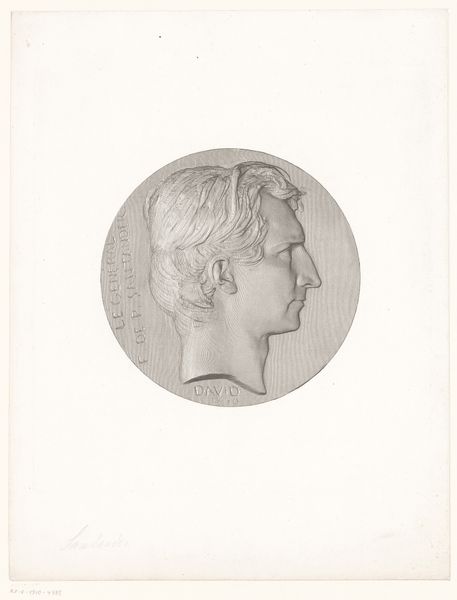
print, relief, engraving
#
portrait
#
neoclacissism
# print
#
relief
#
engraving
Dimensions: height 355 mm, width 251 mm
Copyright: Rijks Museum: Open Domain
Editor: So, here we have a print from after 1832, a relief engraving actually. It's called "Medaille met portret van Antoine-Jean Gros" by Achille Collas. It depicts Gros in profile, looking rather stern. What strikes me is its simplicity. What do you make of it? Curator: Simplicity is key here. It echoes the neoclassical style, a deliberate return to classical forms and ideals. But look closer – it’s not *just* simple. See how Collas renders the texture of Gros’s hair, the slight sag of his jawline? This speaks to a fascinating tension within neoclassicism: the desire for idealized form battling against the reality of the individual. Do you sense any tension there yourself? Editor: I think so. It’s like it wants to be perfectly classical, but that can't hide that human element. Was it common to create portraits like this as engravings? Curator: Absolutely! Prints like these democratized art. They made images, even portraits of important people, accessible to a wider audience. Think of it as the Instagram of its day. Though instead of selfies, you had carefully crafted portraits projecting power and intellect! And engravings? They allowed for incredibly precise detail. I imagine that lent these works more authority. Editor: That makes so much sense! The precision and almost official feel definitely comes across. It’s not something you would just snap on your phone. Curator: Exactly! We look at it now and maybe see just a face. But it reflects aspirations about society. An elite eager to cast itself as embodying order, intelligence, even moral uprightness. Editor: Well, now I see the print's weight a bit differently, thinking of it as a historical communication tool that aimed to present very particular messages about identity and value.
Comments
No comments
Be the first to comment and join the conversation on the ultimate creative platform.
